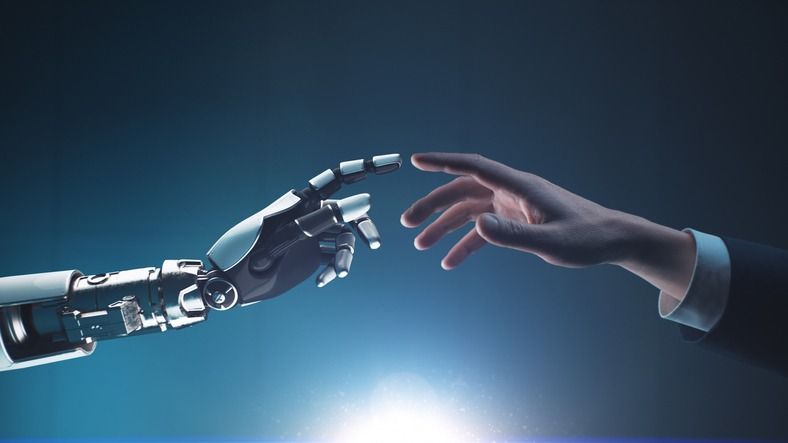Impact of Artificial Intelligence on future of workplaces: Dual-edged sword

As artificial intelligence (AI) continues to evolve, the resulting technological advancements are reshaping industries and occupations at an unprecedented rate. The ongoing revolution presents both exciting opportunities and profound challenges. We are entering an era marked by profound uncertainty, where society finds itself divided on the key question: Will AI serve as a force for good, or will it become a job-destroying disruptor?
One of the most prominent voices in the AI debate is Bill Gates, who believes that AI could significantly address critical shortages in professions like healthcare and education. Gates has expressed confidence that AI could alleviate the shortage of doctors and teachers, particularly in underserved regions of the world. He notes that countries such as India and many in Africa still grapple with insufficient medical personnel, and even in developed nations like the United States, the situation is dire.
The US is projected to face a shortage of up to 86,000 doctors by 2036, according to a report by the Association of American Medical Colleges. This shortage is exacerbated by an aging population and a declining number of doctors specializing in geriatrics. AI startups, such as Suki and Zephyr AI, have already begun to target healthcare inefficiencies, automating administrative tasks like documentation and billing while enhancing diagnostic accuracy. McKinsey estimates that generative AI could contribute $370 billion in productivity gains across the healthcare and pharmaceutical sectors, underscoring AI's potential to streamline operations and alleviate labor shortages.
The potential of AI in education is equally promising. In the US, a staggering 86% of schools reported difficulty finding teachers for the 2023–2024 school year. The UK is exploring similar initiatives, with schools experimenting with AI-powered tools like ChatGPT to augment teaching and support struggling educators. AI can reduce teachers' administrative burdens, giving them more time to focus on actual instruction, thus improving both teaching quality and educational efficiency.
However, AI’s reach is not confined to knowledge-based professions. Gates also predicts that AI will play a transformative role in industries reliant on physical labor, such as manufacturing, construction, and service sectors. Major tech companies like Nvidia are investing heavily in humanoid robots designed to perform manual tasks, from warehouse logistics to cleaning hotel rooms.
While these technological advancements promise to increase productivity and reduce labor costs, they also prompt unsettling questions about the future of human employment. Gates envisions a world where labor becomes less central to people's lives, and individuals might choose to retire earlier or work fewer hours. The underlying economic implications of such a shift are profound, particularly in light of historical predictions made by economist John Maynard Keynes. In 1930, Keynes speculated that technological progress would reduce the standard workweek to just 15 hours. Yet, nearly a century later, most workers still adhere to a 40-hour workweek, reflecting the disparity between technological potential and societal adaptation.
The economic dilemma: Will people become redundant?
As AI continues to evolve, the labor market faces a pressing dilemma: What happens when machines can perform the majority of tasks previously undertaken by humans? This question is especially pertinent in light of AI's ability to automate not only routine administrative jobs but also physical labor.
The economic impact is twofold. On the one hand, AI can enhance productivity and economic efficiency. On the other hand, there is a growing concern that widespread automation could render large segments of the workforce obsolete. This is particularly alarming for workers in low-skill jobs who may find it difficult to transition to higher-skilled roles.
AI’s ability to displace workers without sufficient opportunities for reskilling presents a critical challenge. While some argue that workers will adapt by learning new skills, this process is not without its difficulties. Many individuals, particularly those in low-skill roles, may not have access to the educational resources or time necessary to upskill. As a result, this demographic could face long-term unemployment, further widening the income inequality gap and creating societal divisions.
Government intervention: Need for regulation and support
To mitigate the negative impacts of AI on the workforce, governments need to consider proactive interventions. One potential strategy is to impose taxes on AI giants to fund social welfare programs, including reskilling initiatives, unemployment benefits, and universal access to education and healthcare. Additionally, policymakers must ensure that AI’s integration into the workforce is not a zero-sum game but one that maximizes benefits for all stakeholders, including workers.
Governments will also need to rethink their approach to the labor market. Instead of relying solely on traditional forms of work, they may need to explore new concepts of economic contribution, such as basic income models, which could offer citizens financial security as they transition to new roles or reduce their working hours. Importantly, these initiatives must be designed in such a way that they foster societal well-being without stifling the innovation that drives technological progress.
Current landscape in Azerbaijan: Emerging applications of AI
Looking beyond global trends, it is important to explore how AI is being implemented at the national level. In Azerbaijan, AI is already making inroads across various sectors. According to Fariz Jafarov, the Executive Director of the Center for Analysis and Coordination of the Fourth Industrial Revolution (4SIM), AI applications are expanding in sports, agriculture, and the oil and gas sectors. Notably, drones are being deployed in agriculture, while facial recognition technologies are used to enhance access to e-government services.
In the private sector, AI is being leveraged in industries like customs processing, where special computers and cameras scan products for details, improving efficiency and reducing human error. Furthermore, work is underway to develop AI systems capable of recognizing Azerbaijani language voice commands and automating responses in customer service settings. These examples highlight how AI is becoming an integral part of Azerbaijan's technological infrastructure, with the potential to enhance both economic growth and the quality of public services.
The future of work in an AI-driven world will require a delicate balance. While AI has the potential to enhance productivity and efficiency, its widespread implementation will likely lead to both job displacement and the creation of new job categories. As highlighted by AI tools themselves, the transition will be complex.
A question was posed to an AI assistant: "Do you think people will lose their place in the labor market due to artificial intelligence?"
The AI's response was insightful:
“Yes, some people may face displacement in the labor market due to AI, especially in routine or manual jobs. However, AI can also create new opportunities, requiring reskilling and adaptation to emerging roles. The overall impact will depend on how industries and workers adjust.”
This response underscores a fundamental truth about AI’s potential impact on the workforce: displacement is inevitable in certain sectors, but AI also opens the door to new opportunities that can only be realized if workers are provided with the right tools to reskill and adapt. This highlights the necessity of both a forward-thinking workforce and policies that support such transitions.
Governments must establish frameworks that support workers in transitioning to new careers, while industries should prioritize worker retraining alongside automation. Ultimately, the goal should not be to replace humans with machines but to create a collaborative ecosystem where human potential is enhanced by AI’s capabilities.
In a nutshell, the impact of AI on the labor market presents both opportunities and challenges. While the technology may reduce the number of jobs in certain sectors, it also has the potential to create new roles, provided that workers are given the tools and resources to reskill. Governments will play a critical role in regulating AI and ensuring that it serves the public good. The future of work may no longer center around traditional labor, but it will always require human creativity, judgment, and adaptability.
AI, created by humans for the benefit of humanity, offers a chance to rethink the very nature of work and economic contribution. While the fear of obsolescence is real, it is crucial to remember that people have always adapted to technological change, and there is no reason to believe that this time will be different. The rise of AI is not the end of human labor but the beginning of a new chapter, one where humans and machines collaborate to build a more efficient, equitable world.
Here we are to serve you with news right now. It does not cost much, but worth your attention.
Choose to support open, independent, quality journalism and subscribe on a monthly basis.
By subscribing to our online newspaper, you can have full digital access to all news, analysis, and much more.
You can also follow AzerNEWS on Twitter @AzerNewsAz or Facebook @AzerNewsNewspaper
Thank you!

